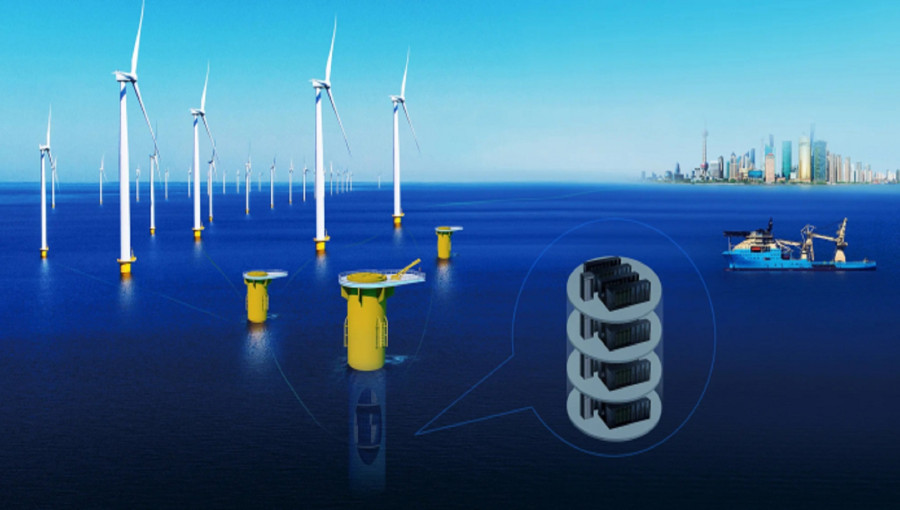China has unveiled the world’s first wind-powered underwater data center, located off the coast of the Lin-gang Special Area in the Shanghai Pilot Free Trade Zone. This innovative facility, which cost approximately ¥1.6 billion (US$226 million), represents a significant advancement in sustainable computing infrastructure by utilizing offshore wind energy for over 95% of its power supply and leveraging the natural cooling properties of the seabed. The center aims to reduce power consumption by nearly 23% compared to conventional data centers while drastically minimizing freshwater usage and land requirements.
The underwater data center is engineered to address the high energy demands of traditional data centers, which can consume millions of gallons of water daily for cooling. By tapping into seawater for cooling purposes, this facility is projected to lower its cooling energy consumption to less than 10%, achieving a Power Usage Effectiveness (PUE) rating of 1.15, well below the national guideline of 1.25 for large-scale data centers by the end of 2025. This first phase lays the groundwork for a facility that will support a diverse array of applications including artificial intelligence workloads, 5G networks, and e-commerce, establishing itself as a vital component of the region’s digital infrastructure.
Looking ahead, the current 2.3-MW facility is planned to expand in future phases to a capacity of 24 MW, although a timeline for this expansion has yet to be determined. Earlier in the year, China also launched another UDC in Hainan’s Lingshui Li area, which held the title of the first commercial underwater data center, differentiating itself from a test facility established by Microsoft off Scotland’s coast. The Lin-gang project, located about 47 miles southeast of Shanghai, is pioneering the use of offshore wind power in such a large commercial context, merging renewable energy with subaqueous cooling technology.
However, this initiative is in its nascent stages, with engineers recognizing that substantial work remains to transition from demonstration to full-scale operations. Concerns about maintenance costs, corrosion, and environmental impacts are currently being evaluated. “Construction of UDCs is still in its initial stage,” commented Wang Shifeng, chairman of the Third Harbor Engineering company, underscoring the need for technological advancements and cost efficiencies for broader application. In March, government officials in Shanghai announced plans to enhance the intelligent computing cloud sector significantly by 2027, aiming for a computing capacity of 200 EFLOPS and an investment exceeding ¥200 billion.

